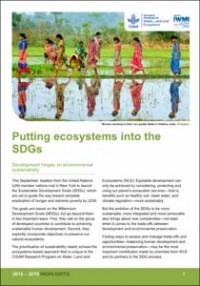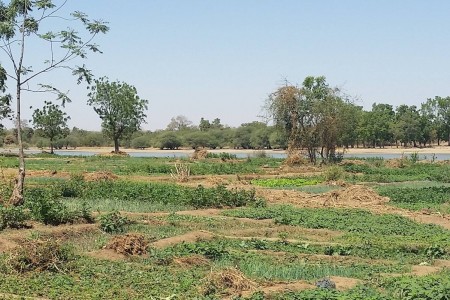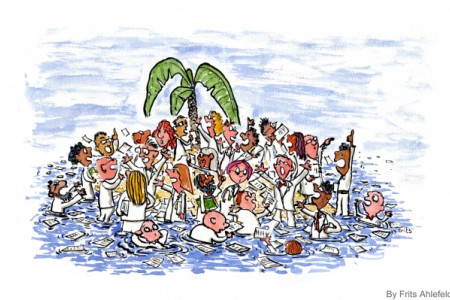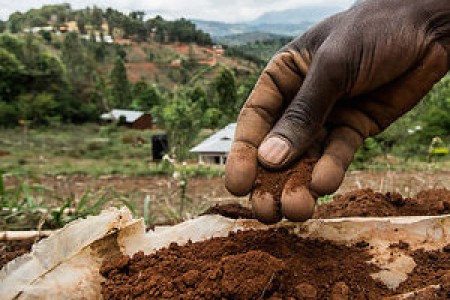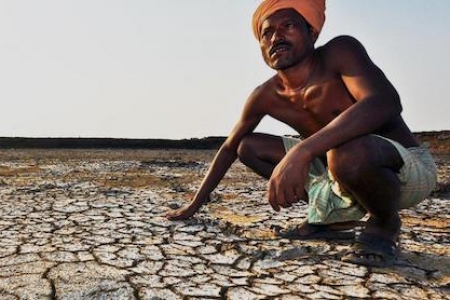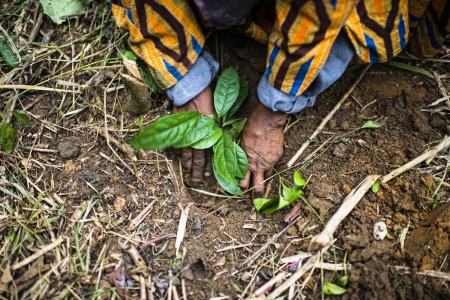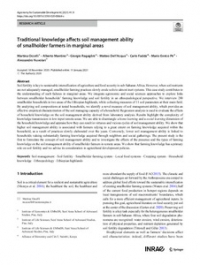Development hinges on environmental sustainability
This September, leaders from the United Nations (UN) member nations met in New York to launch the Sustainable Development Goals (SDGs), which are set to guide the way toward complete eradication of hunger and extreme poverty by 2030.
The goals are based on the Millennium Development Goals (MDGs), but go beyond them in two important ways: First, they call on the group of developed countries to contribute to achieving sustainable human development. Second, they explicitly incorporate objectives to preserve our natural ecosystems.
The prioritization of sustainability clearly echoes the ecosystems-based approach that is unique to the CGIAR Research Program on Water, Land and Ecosystem (WLE): Equitable development can only be achieved by considering, protecting and using our planet’s ecosystem services—that is, benefits such as healthy soil, clean water, and climate regulation—more sustainably.
But the ambition of the SDGs to be more sustainable, more integrated and more achievable also brings about new complexities—not least when it comes to the trade-offs between development and environmental preservation.
Finding ways to assess and manage trade-offs and opportunities—balancing human development and environmental preservation—may be the most important contribution made by scientists from WLE and its partners to the SDG process.
Complexities inherent in food security and nutrition goals
It was during the Rio+20 conference in 2012 that the UN member states agreed to define a new set of universal goals, targets and indicators to guide their policies and efforts on development until 2030.
Since then, the UN-led Sustainable Development Solutions Network (SDSN) has coordinated a wide range of initiatives, including open working groups, consultations and scientific reviews, to formulate the appropriate goals.
Scientists from WLE have supported the process to define several of the seventeen goals in a number of different ways.
For example, scientists have contributed to a scientific review, coordinated by the International Council for Science (ICSU) and the International Social Science Council (ISSC). WLE scientists focused on the second goal, which aims to “end hunger, achieve food security and improved nutrition and promote sustainable agriculture.”
But, as the reviewers argue, while sustainable agriculture is key to ending hunger, addressing inequality and ensuring universal access to safe drinking water and sanitation are also important for nutrition. The reviewers point out that the SDGs must address important complementarities and trade-offs among goals and their targets for the goals to be achievable:
“Care must be taken to simultaneously defeat hunger, increase agricultural productivity and avoid adverse impacts on the natural resource base,” said Claudia Ringler, co-leader of WLE's research theme on Managing Resource Variability and Competing Uses. “If we do not address key interlinkages among goals and targets, and reduce trade-offs, several goals will remain out of reach of the poorest.”
The interlinkages between poverty eradication, basic human rights and environmental preservation are undisputable. As an example, expansion of agricultural land to help end hunger can lead to biodiversity loss and overuse, and pollution of water resources, which in turn could exacerbate food security concerns. This risk of significant trade-offs cannot be ignored.
But, with so many interconnections and complexities at play, can goals and targets lead the way toward greater development? Trade-off analyses and nexus thinking will be required in the implementation, not least when it comes to the actual initiatives developing countries will launch in efforts to achieve the SDGs.
Thrive Blog: SDGs fail to address interlinkages between goals and targets
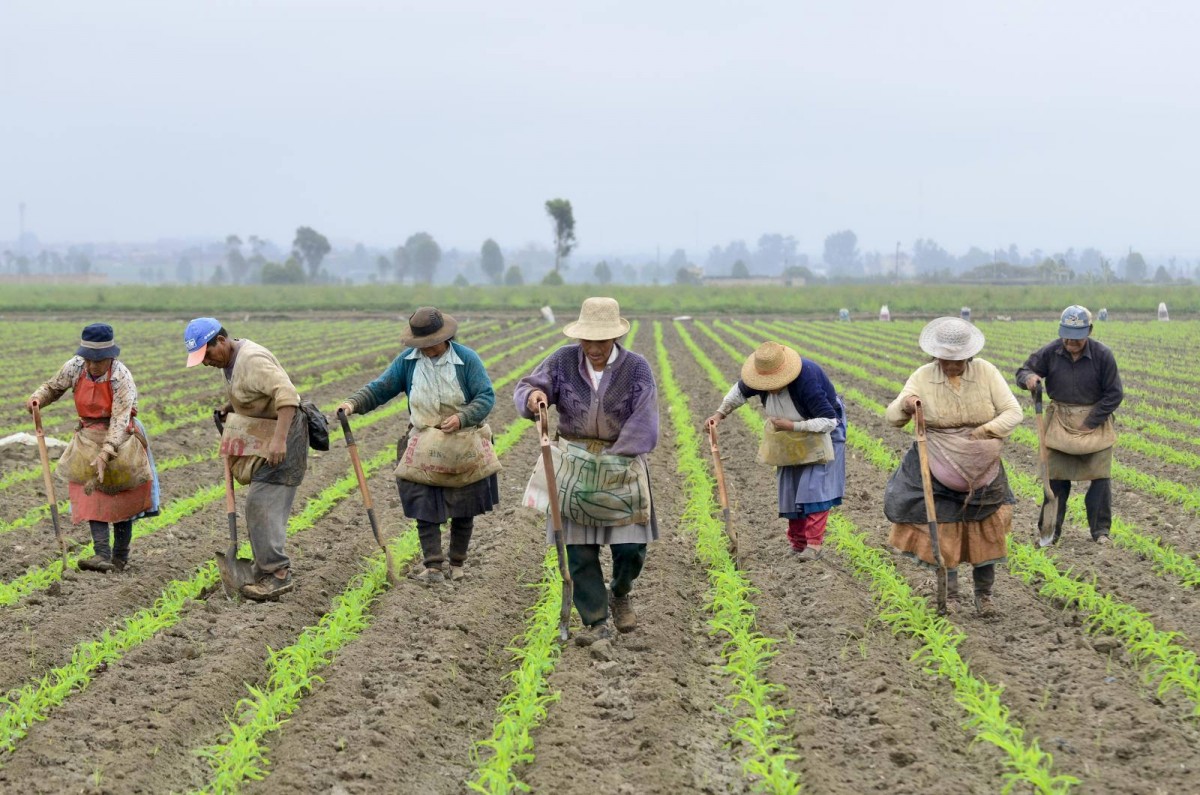
Monitoring progress toward water-related goals
Making sure to select the right indicators for monitoring progress is another way to ensure that trade-offs and synergies among goals and targets are accounted for. Given the renewed focus on sustainability in the SDGs, several goals are directly linked to water for both consumption and use. WLE scientists have proposed indicators and tools for several targets, including those related to Goal 6.
Goal 6 aims to “ensure availability and sustainable management of water and sanitation for all.” Because trade-offs are likely to occur between achieving sanitation for all (SDG 6.2) and improving water quality (SDG 6.3), IWMI scientists in Ghana, Sri Lanka, India and Nepal are actively supporting World Health Organization’s work on identifying and testing indicators that meet the balance between ambition and practicability.
A sub goal, 6.4, aims to “by 2030, substantially increase water-use efficiency across all sectors and ensure sustainable withdrawals and supply of freshwater to address water scarcity, and substantially reduce the number of people suffering from water scarcity.” But how do you measure efficient use of water?
Water productivity may be one indicator to track. Peter McCornick, deputy director general of research at the International Water Management Institute (IWMI), explains:
“Water productivity is an organizing concept, and, very simply put, it is focused on measuring ‘crop per drop,’ that is, how much food we produce per drop of water. The idea is basically to try to increase the amount of production per unit of water and thereby reduce the overall demand on water.”
However, it is important to consider not only how increases in water productivity may result in greater food production, but also the broader costs and benefits, including income increases, livelihood opportunities and ecological benefits at lower social, economic and environmental cost per unit of water spent. Similarly, while technology advances have made it easier to measure water productivity, an otherwise somewhat elusive indicator, that does not make things simple, McCornick cautions:
“Improving productivity also implies changing other inputs, and by doing that, we may actually be negatively impacting the environment. So, while measuring water productivity is an attractive idea, we need to be cautious as to how we interpret that in each country and how we roll that out to understand progress toward the Sustainable Development Goals.”
In other words, complexities and interlinkages similar to the ones other WLE scientists have pointed out in the goals related to food security and nutrition are also apparent when it comes to the water-related goals.
Using the right tools to monitor progress toward the SDGs may help provide decision makers with clearer information on interlinkages. For example, IWMI scientists have proposed monitoring progress toward greater water use efficiency by using water accounting+, a platform developed by IWMI and partners. Water accounting is a framework, rather than a number of indicators, and it therefore provides a more balanced view of water supply and demand and groundwater conditions—including information on trade-offs, costs and benefits.
Yet, it is still possible that very specific indicators, such as water use efficiency, carry the risk of masking trade-offs and complexities and may thereby stand in the way of achieving development outcomes.
Targets and indicators cannot stand alone
In response to this realization, another group of WLE scientists, led by the Land Health Decisions team at the World Agroforestry Centre, have been calling on the UN to move away from target setting and adopt a new method.
Setting targets risks being ineffective or even counter-productive because of the inherent implications: Targeting emphasizes meeting a ‘target’ rather than learning how to improve performance and solve a problem. For example, 50% of women may be members of a parliament, but only a handful speak at meetings.
Target setting may also incentivize mis-reporting information. And last but not least, the vast number and complexity of indicators and the capacity, resources and funds needed to monitor them has caused concern in the development community.
Therefore, scientists are proposing a new solution: decision analysis concepts and tools.
Keith Shepherd, leader of Land Health Decisions at the World Agroforestry Centre and co-leader of WLE’s Decision Analysis and Information Systems research theme, explains the concept:
“In a way it’s like putting up a whole new learning system rather than setting up a group of targets. Using decision analysis is about supporting people to make better decisions and better choices. We need to work on gathering the right information needed to improve decision making on the ground. We have the tools to do that now.”
So how do we identify the more useful indicators? The premise rests on pinpointing critical uncertainties in the real decisions facing stakeholders and working to reduce these uncertainties.
Shepherd and colleagues propose five key principles towards implementing a decision analysis approach:
- Replace targets with measures of return on investment. In other words, decision makers should invest where the likelihood of positive returns for people and environment are the highest
- Model intervention decisions: Instead of starting out by defining indicators, consider the interventions needed to reach a certain goal first, then identify relevant indicators
- Integrate expert knowledge. Expert knowledge can help fill gaps and improve decisions where data is sparse
- Include uncertainty in modeling activities. Considering the unknown, including social and behavioral factors, is key to making sound assumptions
- Measure the most informative factors: Don’t waste money measuring and tracking indicators that have little relevance
But are development practitioners, investors and other decision makers ready to make such a significant shift?
“I think this will need steering, piloting and proof of application because it is an entirely different approach to what many know in development. It will take quite a bit of work to enact change, however we have seen this transition happen in other fields,” says Shepherd.
Shepherd was recently invited to become a member of the new Thematic Group on Data for Sustainable Development of the UN Sustainable Development Solutions Network, which may be one indication that investors and decision makers are ready to embrace such a transition.
Thrive Blog: Researchers propose better way to invest in the SDGs
Moving beyond indicators to achieve SDGs at the national level
Other WLE efforts take place at the national level, where scientists are supporting countries to both identify targets and indicators and to go beyond them, considering the local context, when implementing and monitoring initiatives intended to aid progress toward the SDGs.
For example, scientists from Bioversity International and other partners are working with governments in the Volta and Nile regions of Africa to find ways to leverage the SDGs for environmental conservation and human well-being. Scientists are investigating how the links between ecosystem services and the SDGs can be assessed, modeled and presented. The goal is to inform sound management of the environment in decision making and help the countries achieve the SDGs.
Key challenges include setting realistic national targets and defining indicators that do have potential to reflect progress toward such targets, all while considering local contexts, trade-offs, and opportunities.
Researchers from WLE have proposed 33 potential and scientifically sound indicators for the SDGs. After being presented to the SDSN, several of these indicators have been included as placeholders in the network’s final list of proposed indicators to the UN Statistical Commission, which is considered a significant outcome.
To further prove how such indicators would influence decision making on ecosystem services, hunger, health, energy, water and the environment, scientists are testing newly developed scenario analysis tools in Ghana, Burkina Faso, Kenya and Tanzania.
WLE scientists are also working to provide countries in Africa with better land health data that can support both monitoring and decision making specifically related to SDG 15 on protecting forests and halting land degradation. For example, the Africa Soil Information Service, which WLE is contributing to, is leveraging new spectral-based soil and plant analytical technology to map soil properties in Africa, help countries establish national land health surveillance systems and make soil-testing services affordable to smallholder farmers. Scientists are thus making available data and tools that can help guide and monitor progress toward SDG 15.
Another initiative related to SDG 15 is a collaboration with the Volta Basin Authority’s council of ministers, which has developed a US$51 million strategic action plan (2014-2024) on “conserving and restoring ecosystem functions,” to estimate the livelihood impacts and economic value of the proposed ecosystem restoration activities in the basin.
A flagship report, On Target for People and Planet, was published by IWMI and includes tools, solutions and lessons learned relevant for the implementation of the SDGs. The publication and similar efforts are also intended to help guide governments.
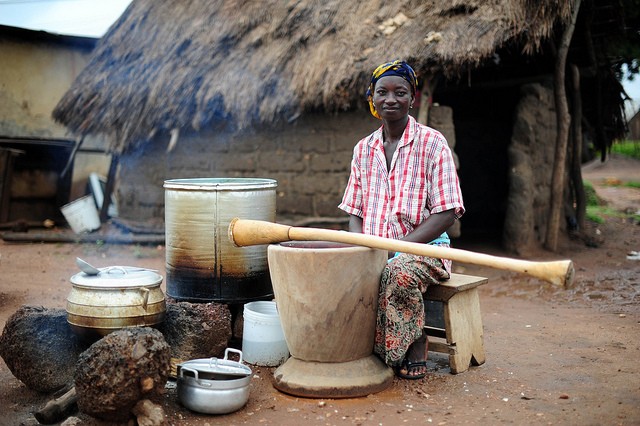
Unique opportunity to shape the future
The SDGs will frame global development processes for years to come and are hoped by many to be the final step toward eradication of extreme poverty.
WLE, with its focus on the intersection between human development and environmental sustainability, is uniquely positioned to make a difference. Investments in agriculture have been proved to reduce poverty at a much faster rate and much lower cost than investments in any other sector. Thus, the incentive to find ways to mitigate the adverse impacts of such investments, including environmental degradation, is enormous and the potential returns for the environment and human well-being are similarly vast.
WLE is committed, along with the rest of CGIAR, to support the realization of the SDGs. The program will continue to contribute to global policy processes and to work directly with UN member countries in the global south to reduce poverty and hunger by establishing more sustainable agricultural production systems, uniting agriculture and nature for human well-being.
WLE scientists have contributed to the following SDGs:
SDG 2: Food security, nutrition and sustainable agriculture
- 2.4: Sustainable food production systems and resilient agricultural practices
SDG 6: Water and sanitation for all
- 6.2: Adequate and equitable sanitation
- 6.3: Water quality
- 6.4: Water-use efficiency
SDG 7: Sustainable and renewable energy for all
- 7.2: Energy efficiency
SDG 13: Combat climate change and its impacts
- 13.1: Resilience for climate related hazards
SDG 15: Protect forests, combat desertification and halt land degradation and biodiversity loss
- 15.1: Conservation, restoration and sustainable use of terrestrial and inland freshwater ecosystems
(Source: Presentation by Jeremy Bird at SWWW 2015)
